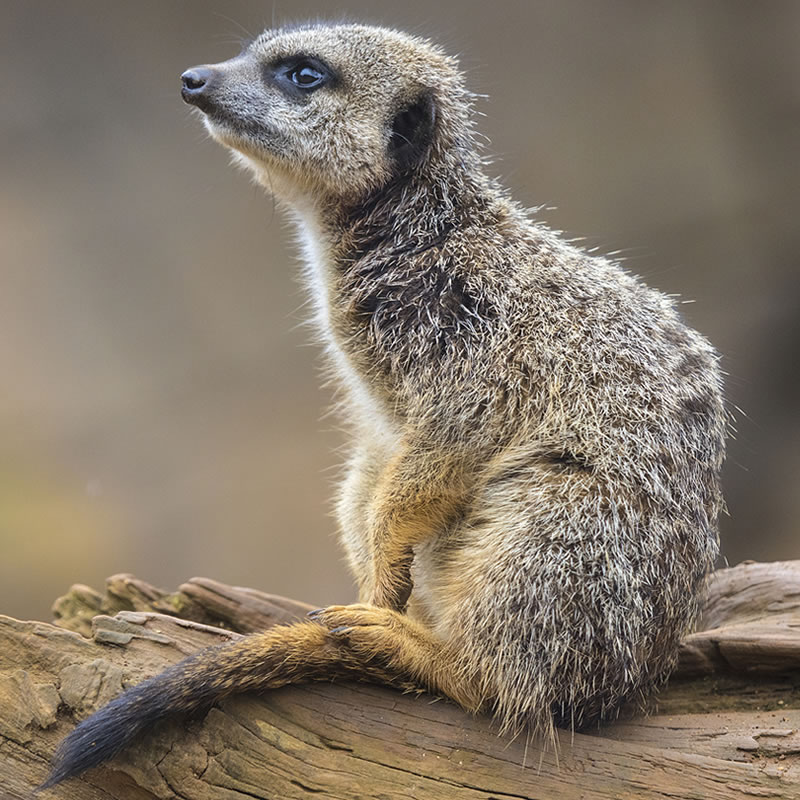
Scientific Name
Suricatta suricatta
Classification
| Kingdom | Animalia |
| Phylum | Chordata |
| Class | Mammalia |
| Order | Carnivora |
| Family | Herpestidae |
| Genus | Suricatta |
| Species | suricatta |
IUCN Redlist Status

Location
Meerkats are located in southern Africa, in countries including Botswana, South Africa, Namibia and Angola.
Habitat
Meerkats can be found in arid plains and desert-like regions of these countries. Here they endure harsh conditions, such as lack of rain and high temperatures. Meerkats live in underground tunnel networks that they have either dug or inhabited from previous animals. These tunnel networks offer them protection from predators, as well as from the hot sun.
Diet
Meerkats feed primarily on insects, but also eat lizards, eggs, rodents and scorpions. Meerkats have an immunity to scorpions' stings. While a group of meerkats (often called a mob) is foraging for food, one or more meerkats will stand on its hind legs and watch for danger.
Size
Meerkats are members of the mongoose family "Herpestidae", most of which also live in Africa. They weigh between 1.5 - 2.5 pounds, and are 10 - 14 inches in length, not including the tail. Their tails are generally half as long as their bodies.
Description
Meerkats have long, tubular bodies covered by red, tan and grey fur. Across their backs they may have red stripes. Their tails are also red, grey or tan, and have black tips on the ends. The coloration of meerkats helps them to blend in with the arid conditions in which they live.
Meerkats have similar facial features to other members of the mongoose family. Meerkats have small, black ears, located on the sides of their heads. Their muzzles are short, and their noses are black. Around their eyes they have black rings of fur. These black rings likely help meerkats to see better in bright sunlight.
Adaptations and Behaviors
Meerkats rely heavily on communication and a communal society to survive. They live in large social groups called mobs or gangs. They constantly work together to help each other survive the harsh conditions of their environment. Meerkats share jobs such as watching their young and looking out for predators, each taking turns performing these tasks while the others hunt, eat, dig, and play. Meerkats also work together when they are hunting small prey. Their long, curved claws make them excellent diggers. They can move a surprising amount of dirt very quickly to get at burrowing insects. Other adaptations include coloration that helps camouflage them from predators and an immunity to highly venomous scorpion stings.
Reproduction
Meerkats are sexually mature at about one year old. Their gestation period lasts approximately eleven weeks, after which time a litter of about 3-5 young are born. The young meerkats are born underground in the complex tunnel system in which they live. The young are raised by the entire family group.
Other Facts
In captivity, meerkats have been known to live up to 15 years. In the wild, they usually live about 10.
